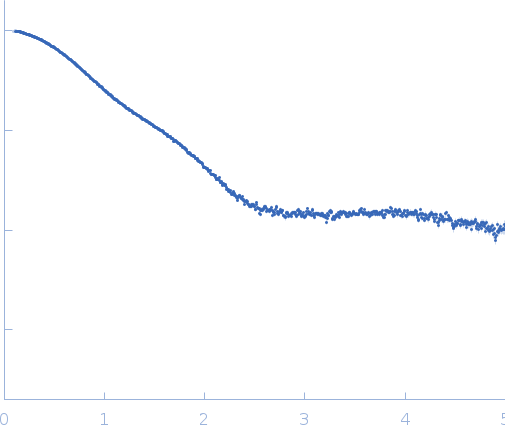|
Synchrotron SAXS data from solutions of calcium-bound calmodulin in 20 mM Hepes, 150 mM NaCl, 4 mM CaCl2, pH 7.4 were collected on the SWING beam line at the SOLEIL storage ring (Saint-Aubin, France) using a CCD AVIEX detector at a sample-detector distance of 2.0 m and at a wavelength of λ = 0.1 nm (I(s) vs s, where s = 4πsin θ/λ and 2θ is the scattering angle). 250 successive 1.5 second frames (1second exposure time / 0.5 second dead time) were collected at at 15°C using size-exclusion chromatography SAXS. A 50 μl sample containing 409 µM calmodulin was injected onto an Agilent Bio SEC-3, 300 Å column and eluted at a 0.20 ml/min flow rate.
Scattered intensities were converted into absolute scale (cm-1) values using the scattering of water. Two independent determinations of the molecular mass were obtained using the programs SAXSMow2 and ScÅtter3 available at the URLs http://saxs.ifsc.usp.br/ and https://bl1231.als.lbl.gov/scatter/, respectively. The average value is MWexperimental=16.8 kDa.
ab initio model: Comparison of the experimental data (blue dots) with the calculated scattering pattern (red line) of the DENSS density distribution shown on the right.(T. Grant, Ab initio electron density determination directly from solution scattering data. Nat Methods 15, 191–193 (2018)).
|
|
 s, nm-1
s, nm-1